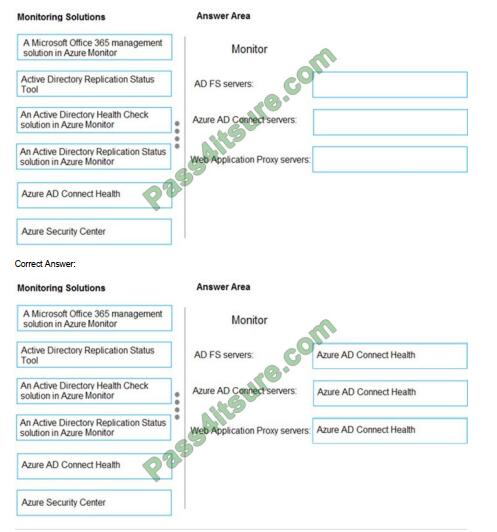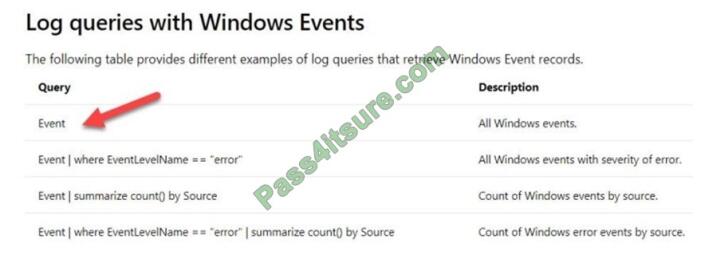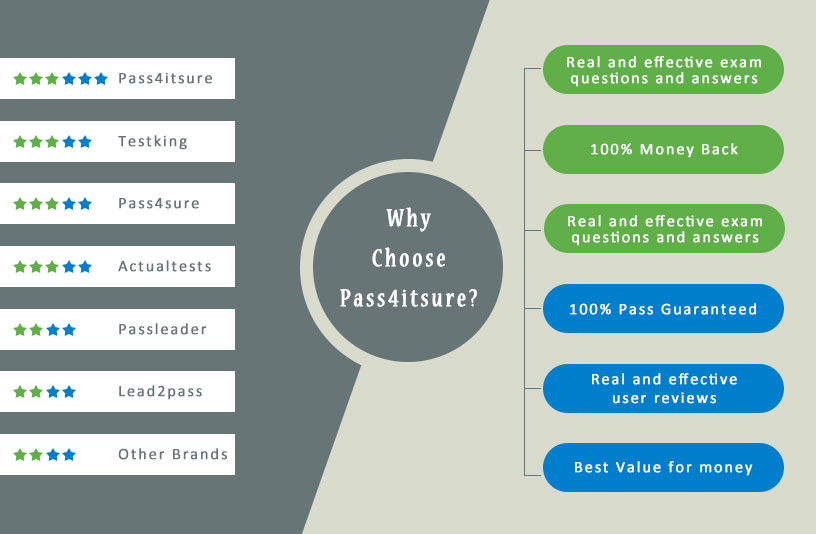Cisco Certification Exam Prep Materials
Cisco CCNA Exam Prep Material Download
Cisco CCT Exam Prep Material Download
- Cisco 010-151 Dumps PDF
- Cisco 100-490 Dumps PDF
- Cisco 100-890 Dumps PDF
- Tips: Beginning February 10, the CCT Certification 500-150 FLDTEC v1.0 exam will replace the 100-490, 010-151, and 100-890 exams.
Cisco CyberOps Exam Prep Material Download
Cisco DevNet Exam Prep Material Download
Cisco CCNP Exam Prep Material Download
- Cisco 300-410 Dumps PDF
- Cisco 300-415 Dumps PDF
- Cisco 300-420 Dumps PDF
- Cisco 300-425 Dumps PDF
- Cisco 300-430 Dumps PDF
- Cisco 300-435 Dumps PDF
- Cisco 300-440 Dumps PDF
- Cisco 300-510 Dumps PDF
- Cisco 300-515 Dumps PDF
- Cisco 300-535 Dumps PDF
- Cisco 300-610 Dumps PDF
- Cisco 300-615 Dumps PDF
- Cisco 300-620 Dumps PDF
- Cisco 300-630 Dumps PDF
- Cisco 300-635 Dumps PDF
- Cisco 300-710 Dumps PDF
- Cisco 300-715 Dumps PDF
- Cisco 300-720 Dumps PDF
- Cisco 300-725 Dumps PDF
- Cisco 300-730 Dumps PDF
- Cisco 300-735 Dumps PDF
- Cisco 300-810 Dumps PDF
- Cisco 300-815 Dumps PDF
- Cisco 300-820 Dumps PDF
- Cisco 300-835 Dumps PDF
Cisco CCIE Exam Prep Material Download
- Cisco 350-401 Dumps PDF
- Cisco 350-501 Dumps PDF
- Cisco 350-601 Dumps PDF
- Cisco 350-701 Dumps PDF
- Cisco 350-801 Dumps PDF
Cisco CCDE Exam Prep Material Download
Cisco Other Exam Prep Material Download
- Cisco 500-052 Dumps PDF
- Cisco 500-210 Dumps PDF
- Cisco 500-220 Dumps PDF
- Cisco 500-420 Dumps PDF
- Cisco 500-442 Dumps PDF
- Cisco 500-444 Dumps PDF
- Cisco 500-470 Dumps PDF
- Cisco 500-490 Dumps PDF
- Cisco 500-560 Dumps PDF
- Cisco 500-710 Dumps PDF
- Cisco 700-150 Dumps PDF
- Cisco 700-750 Dumps PDF
- Cisco 700-760 Dumps PDF
- Cisco 700-765 Dumps PDF
- Cisco 700-805 Dumps PDF
- Cisco 700-821 Dumps PDF
- Cisco 700-826 Dumps PDF
- Cisco 700-846 Dumps PDF
- Cisco 700-905 Dumps PDF
- Cisco 820-605 Dumps PDF
Fortinet Exam Dumps
fortinet nse4_fgt-6.4 dumps (pdf + vce)
fortinet nse4_fgt-6.2 dumps (pdf + vce)
fortinet nse5_faz-6.4 dumps (pdf + vce)
fortinet nse5_faz-6.2 dumps (pdf + vce)
fortinet nse5_fct-6.2 dumps (pdf + vce)
fortinet nse5_fmg-6.4 dumps (pdf + vce)
fortinet nse5_fmg-6.2 dumps (pdf + vce)
fortinet nse6_fml-6.2 dumps (pdf + vce)
fortinet nse6_fnc-8.5 dumps (pdf + vce)
fortinet nse7_efw-6.4 dumps (pdf + vce)
fortinet nse7_efw-6.2 dumps (pdf + vce)
fortinet nse7_sac-6.2 dumps (pdf + vce)
fortinet nse7_sdw-6.4 dumps (pdf + vce)
fortinet nse8_811 dumps (pdf + vce)
Pass4itsure share these resources with you. Both VCE and PDF dumps contain the latest Microsoft AZ-301 exam questions, which will ensure your AZ-301 exam 100% passed! You can get AZ-301 VCE dumps and AZ-301 PDF dumps from Pass4itsure. Please get the latest Pass4itsure AZ-301 dumps here: https://www.pass4itsure.com/az-301.html (285 QA Dumps)
Check out Microsoft AZ-301 Exam Study Guides:
- Exam AZ-301: Microsoft Azure Architect Design
- Free Download Microsoft AZ-301 Dumps
- Microsoft AZ-301 Exam Video
- Microsoft Azure AZ-301 Exam Questions Answers, Practice! Practice!
- Why Choose Pass4itsure
- Latest Discount Code “2020PASS” – Pass4itsure
Exam AZ-301: Microsoft Azure Architect Design
You can find more information on the exam website.
Must be familiar with the test objectives and skills that were first tested. This is why I recommend that you read the exam description and the skills tested.
Free Download Microsoft AZ-301 Dumps
One thing I often use to prepare for the Microsoft AZ-301 exam is Microsoft AZ-301 dumps. This is the relevant Microsoft AZ-301 dumps I used to prepare and study for the AZ-301 exam – https://drive.google.com/file/d/1tNJ2-60Ssb0JcR3wq5S83I_BcnUeVHAQ/view?usp=sharing AZ-301 PDF Dumps Free.
Microsoft Azure AZ-301 Exam Questions Answers, Practice! Practice!
QUESTION 1
DRAG DROP
You have an Azure Active Directory (Azure AD) tenant. All user accounts are synchronized from an on-premises Active
Directory domain and are configured for federated authentication. Active Directory Federation Services (AD FS) servers
are published for external connections by using a farm of Web Application Proxy servers.
You need to recommend a solution to monitor the servers that integrate with Azure AD. The solution must meet the
following requirements:
1.
Identify any AD FS issues and their potential resolutions.
2.
Identify any directory synchronization configuration issues and their potential resolutions
3.
Notify administrators when there are any issues affecting directory synchronization or AD FS operations.
Which monitoring solution should you recommend for each server type? To answer, drag the appropriate monitoring
solutions to the correct server types. Each monitoring solution may be used once, more than once, or not at all. You
may
need to drag the split bar between panes or scroll to view content.
NOTE: Each correct selection is worth one point.
Select and Place:

QUESTION 2
Note: This question is a part of series of questions that present the same scenario. Each question in the series contains
a unique solution that might meet the stated goals. Some question sets might have more than one correct solution,
while others might not have a correct solution.
After you answer a question in this section, you will NOT be able to return to it. As a result, these questions will not
appear in the review screen.
Your company has an on-premises Active Directory Domain Services (AD DS) domain and an established Azure Active
Directory (Azure AD) environment. Your company would like users to be automatically signed in to cloud apps when
they
are on their corporate desktops that are connected to the corporate network.
You need to enable single sign-on (SSO) for company users.
Solution: Configure an AD DS server in an Azure virtual machine (VM). Configure bidirectional replication.
Does the solution meet the goal?
A. Yes
B. No
Correct Answer: B
QUESTION 3
You have a web app named App1 that is hosted on-premises and on four Azure virtual machines. Each virtual machine
is in a different region.
You need to recommend a solution to ensure that users will always connect to the closest instance of App1. The
solution must prevent the users from attempting to connect to a failed instance of App1.
Which two possible recommendations achieve the goal? Each correct answer presents a complete solution.
NOTE: Each correct selection is worth one point.
A. Azure Front Door Service
B. Azure Load Balancer
C. round-robin DNS
D. Azure Traffic Manager
E. Azure Application Gateway
Correct Answer: AD
QUESTION 4
A company has deployed several applications across Windows and Linux Virtual machines in Azure. Log Analytics are
being used to send the required data for alerting purposes for the Virtual Machines.
You need to recommend which tables need to be queried for security related queries.
Which of the following would you query for events from Windows Event Logs?
A. Azure Activity
B. Azure Diagnostics
C. Event
D. Syslog
Correct Answer: C
This is also given in the Microsoft documentation, wherein you would use the Event Table for the queries on events from
Windows Virtual machines

Since this is clearly mentioned, all other options are incorrect
For more information on collecting event data from windows virtual machines, please go ahead and visit the below
URL.
Reference:
https://docs.microsoft.com/en-us/azure/azure-monitor/platform/data-sources-windows-events
QUESTION 5
You manage a solution in Azure.
You must collect usage data including MAC addresses from all devices on the network.
You need to recommend a monitoring solution.
What should you recommend?
A. Activity Log Analytics
B. Azure Network Security Group Analytics
C. Network Performance Monitor
D. Azure Application Gateway Analytics
E. Azure Wire Data
Correct Answer: B
A network security group (NSG) includes rules that allow or deny traffic to a virtual network subnet, network interface, or
both. When you enable diagnostic logging for an NSG, you can log the following categories of information:
Event: Entries are logged for which NSG rules are applied to VMs, based on MAC address. The status for these rules is
collected every 60 seconds. Rule counter: Contains entries for how many times each NSG rule is applied to deny or
allow traffic.
Reference: https://docs.microsoft.com/en-us/azure/virtual-network/virtual-network-nsg-manage-log
QUESTION 6
You need to recommend a data storage solution that meets the following requirements:
1.
Ensures that application can access the data by using a REST connection
2.
Hosts 20 independent tables of varying sizes and usage patterns
3.
Automatically replicates the data to a second Azure region
4.
Minimizes costs What should you recommend?
A. an Azure SQL Database elastic database pool that uses active geo-replication
B. tables in an Azure Storage account that uses geo-redundant storage (GRS)
C. tables in an Azure Storage account that use read-access geo-redundant storage (RA-GR)
D. an Azure SQL database that uses active geo-replication
Correct Answer: C
QUESTION 7
Note: This question is a part of series of questions that present the same scenario. Each question in the series contains
a unique solution that might meet the stated goals. Some question sets might have more than one correct solution,
while others might not have a correct solution.
After you answer a question in this section, you will NOT be able to return to it. As a result, these questions will not
appear in the review screen.
You have an Azure subscription that contains a resource group named RG1.
You create an Azure Active Directory (Azure AD) group named ResearchUsers that contains the user accounts of all
researchers.
You need to recommend a solution that meets the following requirements:
1.
The researchers must be allowed to create Azure virtual machines.
2.
The researchers must only be able to create Azure virtual machines by using specific Azure Resource Manager
templates.
Solution: On RG1, assign the Contributor role to the ResearchUsers group. Create a custom Azure Policy definition and
assign the policy to RG1.
Does this meet the goal?
A. Yes
B. No
Correct Answer: A
QUESTION 8
Note: This question is a part of series of questions that present the same scenario. Each question in the series contains
a unique solution that might meet the stated goals. Some question sets might have more than one correct solution,
while
others might not have a correct solution.
After you answer a question in this section, you will NOT be able to return to it. As a result, these questions will not
appear in the review screen.
Your company has an on-premises Active Directory Domain Services (AD DS) domain and an established Azure Active
Directory (Azure AD) environment.
Your company would like users to be automatically signed in to cloud apps when they are on their corporate desktops
that are connected to the corporate network.
You need to enable single sign-on (SSO) for company users.
Solution: Install and configure an on-premises Active Directory Federation Services (AD FS) server with a trust
established between the AD FS server and Azure AD.
Does the solution meet the goal?
A. Yes
B. No
Correct Answer: B Seamless SSO is not applicable to Active Directory Federation Services (ADFS). Instead install and configure an Azure
AD Connect server.
Reference: https://docs.microsoft.com/en-us/azure/active-directory/hybrid/how-to-connect-sso
QUESTION 9
A partner manages on-premises and Azure environments. The partner deploys an on-premises solution that needs to
use Azure services. The partner deploys a virtual appliance.
All network traffic that is directed to a specific subnet must flow through the virtual appliance.
You need to recommend solutions to manage network traffic.
Which two options should you recommend? Each correct answer presents a complete solution.
NOTE: Each correct selection is worth one point.
A. Configure Azure Traffic Manager
B. Implement an Azure virtual network
C. Configure a routing table with forced tunneling
D. Implement Azure ExpressRoute
Correct Answer: CD
C: Forced tunneling lets you redirect or “force” all Internet-bound traffic back to your on-premises location via a Site-toSite VPN tunnel for inspection and auditing. This is a critical security requirement for most enterprise IT policies. Without
forced tunneling, Internet-bound traffic from your VMs in Azure always traverses from Azure network infrastructure
directly out to the Internet, without the option to allow you to inspect or audit the traffic.
Forced tunneling in Azure is configured via virtual network user-defined routes.
D: ExpressRoute lets you extend your on-premises networks into the Microsoft cloud over a private connection
facilitated by a connectivity provider. With ExpressRoute, you can establish connections to Microsoft cloud services,
such as Microsoft Azure, Office 365, and Dynamics 365.
Connectivity can be from an any-to-any (IP VPN) network, a point-to-point Ethernet network, or a virtual crossconnection through a connectivity provider at a co-location facility. ExpressRoute connections do not go over the public
Internet. This allows ExpressRoute connections to offer more reliability, faster speeds, lower latencies, and higher
security than typical connections over the Internet.
Reference: https://docs.microsoft.com/en-us/azure/vpn-gateway/vpn-gateway-forced-tunneling-rm
https://docs.microsoft.com/en-us/azure/expressroute/expressroute-introduction
QUESTION 10
You are planning the implementation of an order processing web service that will contain microservices hosted in an
Azure Service Fabric cluster.
You need to recommend a solution to provide developers with the ability to proactively identify and fix performance
issues. The developers must be able to simulate user connections to the order processing web service from the
Internet, as
well as simulate user transactions. The developers must be notified if the goals for the transaction response times are
not met.
What should you include in the recommendation?
A. container health
B. Azure Network Watcher
C. Application Insights
D. Service Fabric Analytics
Correct Answer: C
QUESTION 11
Note: This question is a part of series of questions that present the same scenario. Each question in the series contains
a unique solution that might meet the stated goals. Some question sets might have more than one correct solution,
while
others might not have a correct solution.
After you answer a question in this section, you will NOT be able to return to it. As a result, these questions will not
appear in the review screen.
You are migrating an on-premises application to Azure. One component of the application is a legacy Windows native
executable that performs image processing.
The image processing application must run every hour. During times that the image processing application is not
running, it should not be consuming any Azure compute resources.
You need to ensure that the image processing application runs correctly every hour.
Solution: Create an Azure Function to run the image processing application every hour.
Does the solution meet the goal?
A. Yes
B. No
Correct Answer: B
Instead use an Azure Logic Apps, which helps you automate workflows that run on a schedule.
Reference: https://docs.microsoft.com/en-us/azure/logic-apps/tutorial-build-schedule-recurring-logic-app-workflow
QUESTION 12
You are designing a solution for a company to deploy software for testing and production. The solution must meet the
following requirements:
1.
Applications must be deployed to several different environments and must run without installation of dependencies.
2.
Existing published application must be ported to the new solution.
3.
Application developers must be given flexibility when architecting their code.
You need to recommend a solution for hosting applications.
What should you select?
A. Azure worker role
B. Azure Kubernetes Service
C. Azure Functions
D. Azure Batch
Correct Answer: B
Kubernetes is open-source orchestration software for deploying, managing, and scaling containers. The fully managed
Azure Kubernetes Service (AKS) makes deploying and managing containerized applications easy. It offers serverless
Kubernetes.
Reference: https://azure.microsoft.com/en-us/services/kubernetes-service/
QUESTION 13
You are designing an Azure Web App that includes many static content files.
The application is accessed from locations all over the world by using a custom domain name.
You need to recommend an approach for providing access to the static content with the least amount of latency.
Which two actions should you recommend? Each correct answer presents part of the solution.
NOTE: Each correct selection is worth one point.
A. Configure a custom domain name that is an alias for the Azure Storage domain.
B. Configure a CNAME DNS record for the Azure Content Delivery Network (CDN) domain.
C. Place the static content in Azure Table storage.
D. Place the static content in Azure Blob storage and enable Content Delivery Network (CDN) on the account.
Correct Answer: BD
D: Add Azure Content Delivery Network (CDN) to a web app in Azure App Service.
B: When you use a CDN endpoint to deliver content, a custom domain is necessary if you would like your own domain
name to be visible in your CDN URL. Having a visible domain name can be convenient for your customers and useful
for
branding purposes.
Create a CNAME DNS record, and associate the custom domain with your CDN endpoint.
Reference:
https://docs.microsoft.com/en-us/azure/cdn/cdn-map-content-to-custom-domain
https://docs.microsoft.com/en-us/azure/cdn/cdn-add-to-web-app
Why Choose Pass4itsure
If you are looking for real Microsoft AZ-301 dumps, the best choice is Pass4itsure.

Latest Discount Code “2020PASS” – Pass4itsure
Please read the picture carefully to get 12% off!

P.S
I hope this Microsoft Azure AZ-301 exam study guide can help you pass the exam. I also recommend you to go https://www.pass4itsure.com/az-301.html AZ-301 dumps study guide (latest).
Written by Ralph K. Merritt
We are here to help you study for Cisco certification exams. We know that the Cisco series (CCNP, CCDE, CCIE, CCNA, DevNet, Special and other certification exams are becoming more and more popular, and many people need them. In this era full of challenges and opportunities, we are committed to providing candidates with the most comprehensive and comprehensive Accurate exam preparation resources help them successfully pass the exam and realize their career dreams. The Exampass blog we established is based on the Pass4itsure Cisco exam dump platform and is dedicated to collecting the latest exam resources and conducting detailed classification. We know that the most troublesome thing for candidates during the preparation process is often the massive amount of learning materials and information screening. Therefore, we have prepared the most valuable preparation materials for candidates to help them prepare more efficiently. With our rich experience and deep accumulation in Cisco certification, we provide you with the latest PDF information and the latest exam questions. These materials not only include the key points and difficulties of the exam, but are also equipped with detailed analysis and question-answering techniques, allowing candidates to deeply understand the exam content and master how to answer questions. Our ultimate goal is to help you study for various Cisco certification exams, so that you can avoid detours in the preparation process and get twice the result with half the effort. We believe that through our efforts and professional guidance, you will be able to easily cope with exam challenges, achieve excellent results, and achieve both personal and professional improvement. In your future career, you will be more competitive and have broader development space because of your Cisco certification.
Categories
2025 Microsoft Top 20 Certification Materials
- Microsoft Azure Administrator –> az-104 dumps
- Microsoft Azure Fundamentals –> az-900 dumps
- Data Engineering on Microsoft Azure –> dp-203 dumps
- Developing Solutions for Microsoft Azure –> az-204 dumps
- Microsoft Power Platform Developer –> pl-400 dumps
- Designing and Implementing a Microsoft Azure AI Solution –> ai-102 dumps
- Microsoft Power BI Data Analyst –> pl-300 dumps
- Designing and Implementing Microsoft DevOps Solutions –> az-400 dumps
- Microsoft Azure Security Technologies –> az-500 dumps
- Microsoft Cybersecurity Architect –> sc-100 dumps
- Microsoft Dynamics 365 Fundamentals Customer Engagement Apps (CRM) –> mb-910 dumps
- Microsoft Dynamics 365 Fundamentals Finance and Operations Apps (ERP) –> mb-920 dumps
- Microsoft Azure Data Fundamentals –> dp-900 dumps
- Microsoft 365 Fundamentals –> ms-900 dumps
- Microsoft Security Compliance and Identity Fundamentals –> sc-900 dumps
- Microsoft Azure AI Fundamentals –> ai-900 dumps
- Microsoft Dynamics 365: Finance and Operations Apps Solution Architect –> mb-700 dumps
- Microsoft 365 Certified: Enterprise Administrator Expert –> ms-102 dumps
- Microsoft 365 Certified: Collaboration Communications Systems Engineer Associate –> ms-721 dumps
- Endpoint Administrator Associate –> md-102 dumps

